1. What is Gout?
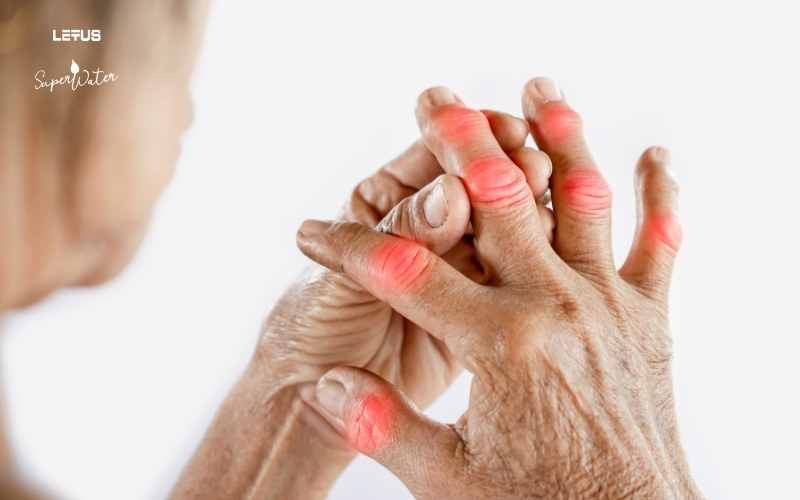
Gout is a form of arthritis caused by a purine metabolism disorder, leading to elevated uric acid levels that cause pain, swelling, redness, and a burning sensation, typically starting in the big toe of the lower limb.
- Purine is a common chemical compound found in many foods and beverages. It is typically absorbed by the body and metabolized into uric acid.
When uric acid levels are high, it deposits as Urate crystals in the joints and surrounding tissues. Over time, these Urate crystals accumulate, causing inflammation and intense pain in the joints, most often in the toes, especially the big toe.
2. Causes of Gout
Normally, uric acid dissolves in the blood, travels through the kidneys, and is excreted in the urine. However, Gout develops when the body either produces too much uric acid or the kidneys excrete too little. This leads to uric acid accumulation and deposition as Urate crystals in the joints or surrounding tissues.
Uric acid is the final product of purine metabolism in humans, and its concentration is primarily determined by endogenous metabolism (synthesis and cell turnover), as well as the rate of renal excretion and reabsorption [2]. Humans lack uricase, the enzyme responsible for converting uric acid into a more soluble and excretable form. Renal excretion of Urate accounts for the majority of hyperuricemia and Gout cases [3].
The causes of Gout are categorized into primary (the majority of cases) and secondary (a smaller number of acquired cases).
Primary Causes:
- 95% of cases occur in men, typically between the ages of 30 and 60.
- A diet rich in purine-containing foods such as high-protein meats and seafood (e.g., liver, kidney, shrimp, crab, egg yolks, mushrooms) is known to exacerbate the condition.
- Frequent consumption of large amounts of alcohol, especially beer.
- Regular consumption of beverages with high fructose content, such as soda, carbonated soft drinks, or a diet excessively high in sugar.
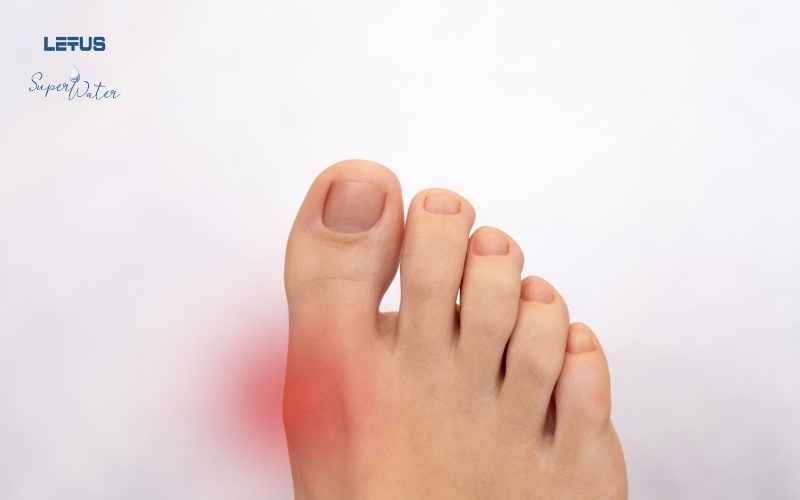
Secondary Causes:
- A family history of Gout.
- Increased production or decreased excretion of uric acid, or both.
- Kidney failure and other diseases that impair the kidneys’ ability to excrete uric acid.
- Pre-existing conditions such as diabetes, impaired kidney function, heart disease, atherosclerosis, vascular occlusion, infectious diseases, and hypertension.
- Blood disorders, such as acute leukemia.
- Use of certain medications that cause uric acid buildup, including: Aspirin, diuretics, chemotherapy drugs, and immunosuppressants like cyclosporine.
- Use of cytotoxic drugs to treat malignant diseases.
- Use of anti-tuberculosis drugs such as ethambutol, pyrazinamide.
- Recent injury, surgery, or dehydration.
3. Symptoms of Gout

Gout typically presents with basic symptoms of sudden pain (often at night) in the joint connecting the big toe to the foot. However, the top of the foot, ankle, knee, wrist, and elbow are also common sites of pain.
The pain usually lasts for several hours and is very intense, accompanied by swelling, heat, redness, and sensitivity to touch, and can even mimic an infection.
The skin over the affected joint may be tight, hot, shiny, red, or slightly purple. In many cases, the patient may experience fever, rapid heart rate, chills, and fatigue.
Symptoms of Gout in the Early Stage: This stage often has few prominent symptoms, though a blood test will show elevated uric acid levels, accompanied by aching in the toes, ankles, knees, wrists, and swollen, red fingers. Symptoms become more pronounced after strenuous physical activity or after parties involving high consumption of alcohol, seafood, red meat, and organ meats.
In this stage, uric acid continues to build up. Urate crystals deposit into large masses called tophi around the joints, causing inflammation, swelling, and intense pain. If left untreated, Gout can destroy the joints, leading to permanent disability. Furthermore, complications such as kidney failure and kidney stones can occur as the kidneys are overworked trying to eliminate excess uric acid from the blood.
Common Sites of Gout Pain:
- Big toe joint
- Ankle joint
- Knee joint
- Wrist joint
- Elbow joint
4. At-Risk Groups and Gout Classification
The prevalence of Gout is approximately 1 in 200 adults. The condition can affect anyone, regardless of age or gender. However, men between 30 and 50 years old and postmenopausal women are more frequently affected. It rarely occurs in young adults and children.
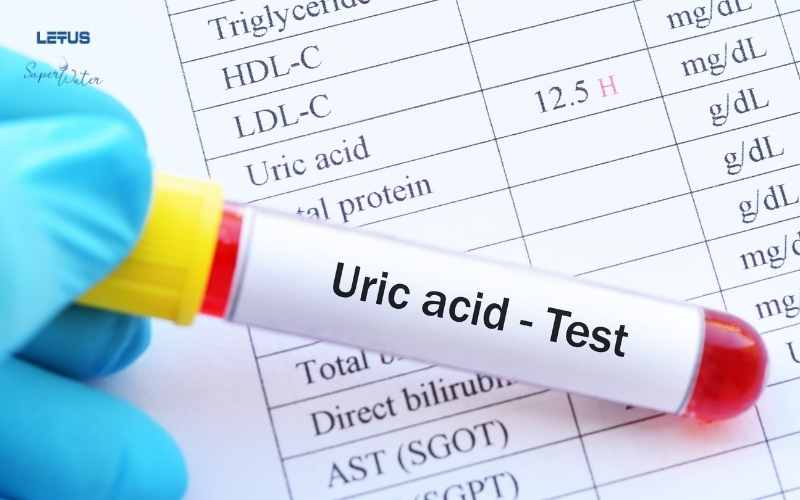
Specific Groups with a High Risk of Gout:
- Men over 40: Statistics show that over 80% of Gout patients are men over 40, often due to poor dietary habits, including frequent consumption of high-protein foods (organ meats, red meats like dog, buffalo, and beef). Additionally, an unhealthy lifestyle, including a lack of exercise, and regular alcohol and tobacco use, contributes to the risk.
- Postpartum Women: Women after childbirth face many health risks, including elevated uric acid levels, fatty liver, and high blood lipids, due to diets that are excessively high in nutrients, leading to higher-than-normal body fat content.
- Perimenopausal Women: The decline in the hormone Estrogen causes disturbances in uric acid metabolism, often combined with a poor diet high in protein and fried foods, and low in green vegetables.
- Overweight or Obese Individuals: They have difficulty excreting uric acid.
- Family History of Gout: Currently, five genes have been linked to Gout, and most are believed to be hereditary. Therefore, your Gout may be inherited from a family member [4] [5].
- Individuals with Poor Diets: Low intake of green vegetables, high consumption
of seafood, red meat, and organ meats. - Asymptomatic Hyperuricemia.
5. Complications of Gout
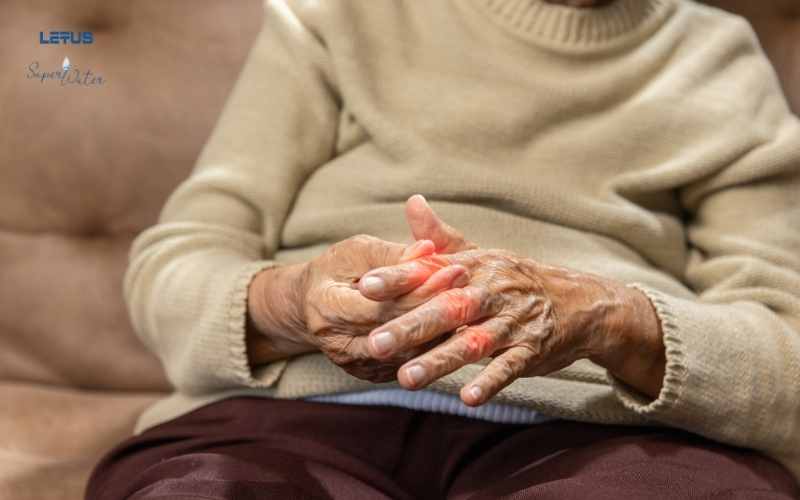
Tophi Complications Tophi are masses of Urate crystals that accumulate over a long period, appearing around the joints in people with chronic Gout. These crystal de
posits look like firm, swollen nodules under the skin at sites like the feet, knees, wrists, fingers, and Achilles tendon, among others.
Tophi can be easily seen, feel hot and soft to the touch, and are swollen and painful. They can make joint movement difficult, reduce the range of motion, and cause inconvenience in daily life.
When Tophi rupture, there is a very high risk of bacterial invasion, leading to septic arthritis and sepsis (blood poisoning) [4].
Joint Damage and Deformity Joint damage and deformity typically occur in people with chronic Gout who experience frequent swelling and inflammation.
Chronic Gout can lead to damage that results in permanent joint deformity and stiffness, making even walking difficult. In severe cases, doctors may recommend surgical removal to restore the deformed joint.
Kidney-Related Diseases The kidneys filter the blood and excrete waste products, including uric acid. Excess uric acid concentration can lead to the accumulation of Urate salts in the kidneys, causing kidney stones.
Kidney disease and kidney failure can develop from uric acid kidney stones. The stones increase the risk of kidney damage, potentially causing scarring that impairs kidney function and sets the stage for kidney failure.
If Gout is not treated promptly, acute attacks will recur frequently, leading to chronic arthritis which causes pain, joint stiffness, restricted movement, joint deformity, and disability.
If Gout is not managed and stabilized, it can lead to other serious chronic conditions:
- Cardiovascular Disease: Hyperuricemia can increase the risk of cardiovascular diseases, including hypertension, atherosclerosis, and stroke.
- Diabetes: Hyperuricemia may increase the risk of developing Type 2 Diabetes [6].
- Neurological Disorders: Hyperuricemia can damage the nervous system, causing symptoms such as numbness, tingling, and muscle weakness.
Additionally, many patients misuse painkillers indiscriminately, leading to dangerous complications like gastrointestinal bleeding, osteoporosis, fractures, diabetes, myocardial infarction (heart attack), and sudden death.
If you have Gout, you need a proper diet: reduce purine intake, eat more vegetables, avoid foods that increase uric acid, maintain a scientifically sound exercise regimen, and consult a doctor for check-ups and treatment of any co-existing conditions.
Simultaneously, you should drink Letus SuperWater Therapeutic mode, which can generate alkaline water with a pH over 10 through electrolysis without the use of catalysts. The resulting hydrogen-rich super-alkaline water retains its natural taste and helps neutralize and rapidly excrete uric acid, reducing pain, swelling, and inflammation due to its antioxidant properties and ability to heal cellular damage in as little as 45 minutes.
6. Treatment and Prevention of Gout
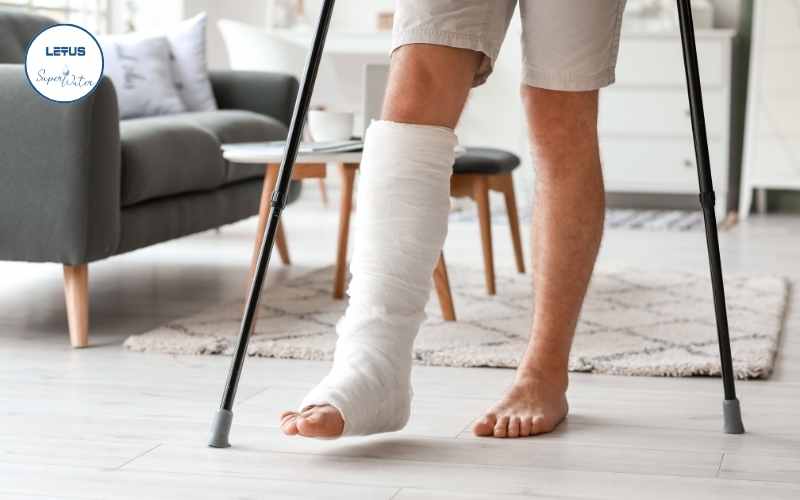
Gout Treatment
- Treating Acute Gout Attacks: Use pain relievers, anti-inflammatory drugs, and corticosteroids to reduce pain and inflammation. Letus SuperWater (high-concentration alkaline hydrogen water) can also be used to soothe the pain.
- Treating Chronic Gout:
- Uric Acid-Lowering Medication: To reduce uric acid levels in the blood.
- Diet: Restrict purine-rich foods and drink plenty of water.
- Physical Therapy: To help reduce pain and improve joint mobility.
- Surgery: In cases of severe complications.
Gout Prevention
- Diet: Limit purine-rich foods, drink enough water, and eat plenty of green vegetables and fruits.
- Regular Exercise: Helps with weight loss and improves cardiovascular health.
- Weight Management: Obesity is a risk factor for Gout.
- Drinking Letus SuperWater helps neutralize uric acid, reduces Urate crystal formation, and supports the prevention of Gout pain attacks.
- Take medication as prescribed by your doctor.



